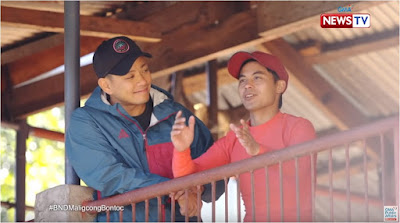The Mountain Province is a landlocked province of the Philippines, which is a part of the Cordillera Administrative Region. The said province was named as such due to the fact that it is located in the Cordillera Central mountain range found in the upper portions of the Luzon island, and the capital of which is Bontoc.
 |
| Location of Bontoc, Mountain Provnce |
With ten municipalities under its administration, and given its name, this province boasts a plethora of hiking trails, rice terraces, mummy caves, and hanging coffins, perfect for outdoor adventurists.
Well, without batting an eyelash, the most popular town, frequented by travelers, is got to be Sagada, which has been accommodating around 180,000 tourist arrivals every year.
Anyway, we now shift our focus, not in the town of Bontoc, but in a quaint barangay under its umbrella called Maligcong, which is slowly gaining interest in the outdoor community.
 |
| Location of Barangay Maligcong, Bontoc (lagalog.com) |
Maligcong is the Kankana-ey term that means “surrounded by rice paddies”, as the village sits in the middle of rice terraces, hailed as among the most beautiful in the entire Cordillera Region.
Since I have been here several times already, for this blog, I chose my February 22-23, 2020 trip together with my friends from the Larga-Bistas Mountaineering Group, as we successfully trekked six mountains in two days, one of which was the tallest peak in Maligcong.
DAY 0: February 21, 2020 (Friday)
Our Sagada-bound CODA Lines tourist bus departed in the evening. The terminal of CODA Lines is located at HM Transport Inc. Monte de Piedad, Corner Maryland, Cubao, Quezon City, Metro Manila. Yes, HM Transport and CODA Lines share the same bus terminal. In addition, all trips going to Sagada passes through the Mountain Province, which explains why our bus' signage indicates SAGADA. Advanced ticket reservation purchase is highly recommended since Sagada is a very popular tourist destination.
 |
| CODA Lines at HM Transport bus terminal |
DAY 1: February 22, 2020 (Saturday)
Travelling for around ten hours, we alighted our bus at the end of the Chico Karayan Bridge, which is the Bontoc town proper.
 |
| Arrival at Bontoc town proper |
We then ate at our "official" breakfast joint, the TLS Canteen, which is located just beside the green directional signage as seen in the photo above.
 |
| TLS Canteen |
 |
| Breakfast time |
After being recharged by a hearty breakfast, we trudged the Nueva Vizcaya-Ifugao-Mountain Province Road going towards the jeepney terminal, situated on the street on the left side of the Bontoc Provincial Plaza.
To maximize on time, we decided on a special jeepney ride that would take us to Maligcong at once, rather than wait for the public jeepneys to start their engines at 8:00AM, which is the earliest trip from Bontoc to Maligcong. For added information, the next public jeepney trip schedules are 12:00 pm, 2:30 pm, 4:30 pm, and 5:30 pm. Travel time would take around 30 minutes.
 |
| Departing Bontoc to Maligcong |
We arrived at our "official" Maligcong accomodation, Suzette's Maligcong Homestay, which we highly recommend due to their high quality of service, as we unloaded our stuff in our respective room assignments, freshened up a bit, and went off immediately towards our first hiking destination, the very popular Mount Fato.
Actually, before proceeding to Mount Fato, we first trekked towards the so-called Lonely Tree, passing by cemented and rough trails, as well as rice terraces.
 |
| Mount Fato Jump-off point along Maligcong Road |
 |
| Forested trail |
 |
| Rice terraces trail |
 |
| Lonely Tree |
 |
| Mount Fato as seen from the Lonely Tree area |
The trail towards Mount Fato is mostly forested, with some parts of the trail on the edge of the mountain.
 |
| Trekking on the edge |
The summit area of Mount Fato at 1438 MASL provides loads of views of Barangay Maligcong, which are great for picture taking. The said mountain is also called Mount Parutan.
 |
| Summit area of Mount Fato |
 |
| Summit area of Mount Fato |
 |
| Actual summit of Mount Fato is on top of this huge rock |
After conquering Mount Fato and eating trail snacks (yup..for some hikers...this can be lunch!), we went straight to our next mountain, which is Mount Mogao.
 |
| Forested trail |
 |
| Mount Mogao as seen along the trail |
The summit area of Mount Mogao at 1565 MASL provides a good view of Barangay Guinaang. Actually, this mountain is really a part of Guinaang rather than Maligcong.
 |
| Summit of Mount Mogao |
 |
| Summit of Mount Mogao |
Returning back to Suzette's Maligcong Homestay, we quickly freshened up, rested a bit, then ate one heck of a dinner at 13 degrees to cap the first day....brrrrrr!
 |
| Dinner at 13 degrees |
Part 2:


































































